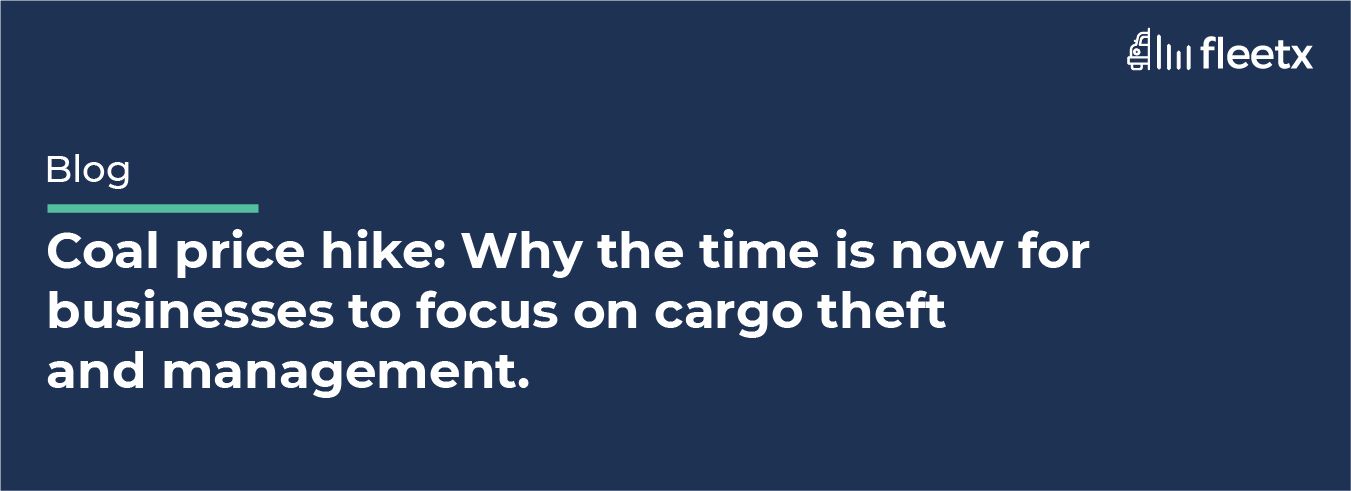
The world is witnessing a spike in the price of all sorts of commodities, in particular industrial inputs like coal, iron ore, and other raw materials & fuel. This price rise results from various factors, majorly, post-covid recovery in demand of goods, low production, supply-chain disruption, and high demand. The price increase directly impacts businesses across different sectors as it significantly increases their cost of production and doing business.
The spike in price directly impacts the end customers as some portion of the high cost of production is passed down by the businesses to the end-customer, who faces an increase in the price of retail goods. This value chain has a domino effect as it reduces demand for these goods in the market as a whole. For example, take the recent spike in the price of coal in India that was trading around Rs 6,500 per tonne in June 2021 and currently trading at Rs 8775 per tonne, almost a 35% increase!
The increase in the price of coal is of great concern to industries, particularly in the construction sector, transportation sector, and mineral sector. Coal is required to fuel thermal power plants that provide electricity and is used as a fuel in manufacturing units, both of which are part of the production process.
The coal prices will not come down for a while due to businesses and countries around the world ramping up production as their economies, and business output improve in the aftermath of the coronavirus pandemic and lockdowns. Thus, to bring down their production cost and strengthen demand, companies require more efficient use and transport of goods to bring down the cost.
Coal theft and its impact on businesses and the mineral industry
Businesses in India are riddled with supply chain problems that impact their cost of production and transportation. Resolving such problems could help them improve their business viability and output. One of such problems that have been simmering for decades is the issue of coal theft or coal pilferages from illegal mining, trafficking, and transportation of coal either from railways transportation or trucks ferrying purchased coals to plants and manufacturing units. The latest example being the alleged theft of 4.5 lakh tonnes of coal from the Baranj open-cast mine in Karnataka by the coal mafia. Coal theft in India is as much a political issue as it is a socio-economical issue.
Additionally, there is a considerable disparity between the data provided by Coal India and experts on the actual scale of coal theft in India. According to a 2014 LiveMint report that quoted Kuntala Lahiri-Dutt, a senior fellow at Australian National University’s Crawford School in Canberra, coal theft and pilferages from Coal India mines in India is rampant and could be in tunes of 60 million tonnes, 13% of the total output at that time. However, due to the nature of theft, exact quantities could not be easily accounted for.
How did Coal India curb the problem of coal theft?
Understanding the quantum of the problem, Coal India began using technology to tackle and reduce cases of coal theft and pilferages. The solution included some of the most popular technology used in fleet management, such as vehicle tracking system to monitor the movement of trucks during transportation, automated weighbridge system, introducing an RFID system for better vehicle identification, installing CCTV cameras inside mines, among several others. Over the years, Coal India has expanded the use of better monitoring and transportation through technology to several of their mines, successfully reducing the occurrences of coal theft and pilferages.
How severe is the problem of cargo theft in mineral industry?
The problem of cargo theft and pilferage stretches much beyond coal. It is one of the most prevalent problems in the Indian transport industry, which incurs financial and operational costs to businesses. According to the latest BSI and TT Club Cargo Theft Report, 2021, fuel, construction material, and other major commodities account for 42% of all cargo thefts globally in 2020, while 72% of all thefts occurred to vehicles during transit. These two figures can give us a pretty good understanding of the vulnerability of transportation. For India, the vulnerability can be attributed to the lack of transparency in the transportation process faced by companies and transporters as most transporters still rely on a traditional system for transportation that lacks any mechanism for monitoring on-route trucks with over-reliance on the driver for updates.
As one would expect, India topped the list of Asian countries for the highest number of cargo theft occurrences, accounting for 64% of all cargo theft in Asia in 2019 (Indian Transport and Logistics News). A similar example came up via a news report by The Hindu - Businessline during the first phase of complete lockdown back in April 2020 when truckers abandoned their loaded trucks on highways to seek housing due to the pandemic. It led to a dire situation incurring double loss to both the companies selling goods and their clients as they fought over who was responsible for the loss or damage of goods.
Tracking cargo theft with technology
Perhaps, these numbers could be a serious indicator of where companies should focus when talking about making the supply chain of cargo more efficient and safer. There is an urgent need to address the lack of transparency by including technology in the transportation process. Taking a cue from Coal India’s effort to improve visibility through technology, companies can implement effective transport management system solutions in their supply chain management. Features of a TMS system, ranging from driver behaviour monitoring to vehicle tracking to a centralized fleet management system, will allow companies to track and get alerted in case of cargo theft and take timely and appropriate actions.


